Mark Sisson's Blog, page 358
November 11, 2012
Weekend Link Love
 Research of the Week
Research of the Week“Absent the requirement to spend most available hours of the day feeding, the combination of newly freed time and a large number of brain neurons affordable on a cooked diet may thus have been a major positive driving force to the rapid increase in brain size in human evolution.” A new study shows how cooked food allowed human brains to become, well, human.
How play and games can transform the work place (PDF).
Interesting Blog Posts
Although I’m absolutely sure this will be of zero interest to all or most of my readers, I thought I’d mention Paul Jaminet‘s latest post on the optimal dosage of chocolate.
Peter at Hyperlipid discusses the latest failure of the latest HDL-boosting drug.
Media, Schmedia
Writing for Mother Jones, Gary Taubes explains how the sugar industry kept scientists from asking tough (or even easy) questions about the health effects of sugar on humans
If you have a few minutes, check out my recent interview with author Tom Woods.
Everything Else
Pre-Made Paleo is driving an effort to serve 5000+ New Jersey residents in need after Hurricane Sandy. You can help by ordering relief meals here.
A new kind of tomato genetically modified to produce an HDL-mimicking peptide was shown to reduce atherogenic plaque accumulation and inflammatory markers in mice. Assuming it does the same in people, would you eat it?
A journal of personal science: in which a man determines how much salt he should eat.
Recipe Corner
Thanks to the massive bird, Thanksgiving fare starts out fairly Primal, but the sides can get really gluten-y and sugar-laden. Here are 10 paleo Thanksgiving sides to make the job easier.
You know, if Hooters started carrying these (and held the breading), I might consider eating there: Buffalo pig tails.
Time Capsule
One year ago (November 11 – November 17)
The Problems with Antibiotics: They Kill the Good Guys and Make You Fat – How antibiotics often lay waste to your entire gut microbiome, thereby setting the stage for the onset of obesity.
How to Eat More Vegetables – People think we’re all about the animal flesh around here – and we dig it, to be sure – but you can’t ignore our love and need for a healthy amount of plant matter. Here’s how to eat more.
Email of the Week
I can pretty much guarantee the comment of the week will come from this article. I’d be willing to bet it also uses the phrase “scrotal drooping.”
- How right you were, Steve.
Grab The Primal Blueprint Cookbook Today and Receive Free S&H and a Free Primal Blueprint Poster

November 10, 2012
Homemade Turkey Stock
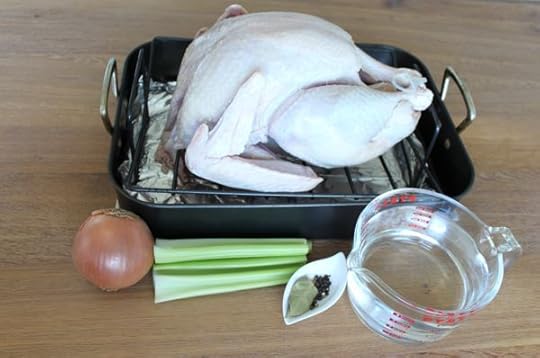 It happens every Thanksgiving. In a shockingly short amount of time, the beautiful bird you spent hours roasting to perfection is ravaged and picked clean down to the bone. What remains of your holiday centerpiece is nothing more than an unappetizing carcass.
It happens every Thanksgiving. In a shockingly short amount of time, the beautiful bird you spent hours roasting to perfection is ravaged and picked clean down to the bone. What remains of your holiday centerpiece is nothing more than an unappetizing carcass.
But don’t be so quick to throw that turkey carcass out. Instead of tossing the bones into the trash, toss them into a stockpot. Add celery, onion, water and seasonings and in a few hours you’ll have flavorful turkey stock for the months ahead.
After cooking an entire holiday meal, no one wants to spend more time in the kitchen. Don’t worry; this no-fuss, straightforward recipe takes only minutes to put together. Then, you can step out of the kitchen and let the stock simmer to completion.
Turkey stock can be used in any recipe that calls for chicken stock. Turn your stock into a nourishing post-holiday soup or freeze 1-cup (250 ml) portions to use in a variety of recipes.
Servings: Approximately 8 cups of stock
Time in the Kitchen: 15 minutes, plus 3 hours to simmer the stock
Ingredients:

1 cooked turkey carcass, cut or broken into pieces. If a little bit of meat is still attached, that’s fine.
4 celery stalks, chopped
1 onion, chopped
1 teaspoon black peppercorns
2 bay leaves
Enough water to cover the carcass in a stockpot by one or two inches
Instructions:
Throw the bones, celery, onion, peppercorns and bay leaves into a stockpot and cover with water. Bring the water to a boil then immediately reduce the heat so the water is at a very gentle simmer. Simmer, uncovered, for three hours. If foam rises to the top, skim it off occasionally.
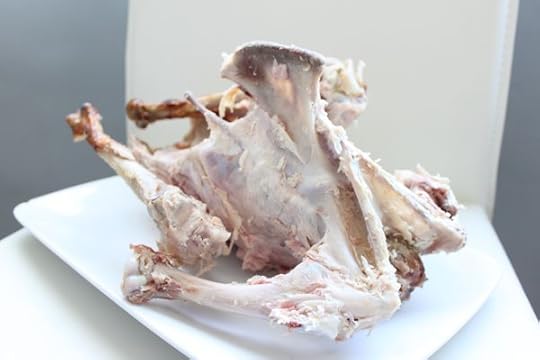
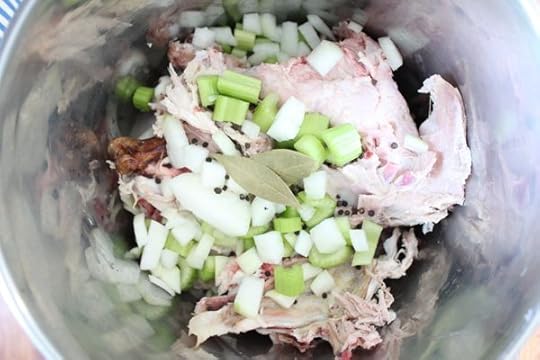
Strain the solids out and discard. Let the stock cool completely before covering with a lid.
The stock will keep for several days in the refrigerator or for months in the freezer.
*Note that no salt is added to the stock. Wait to add salt until you’re using the stock in a recipe, that way, you can be sure to add the right amount for the specific recipe you’re cooking.
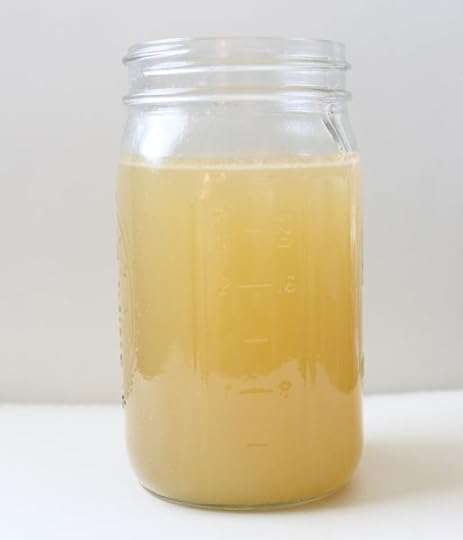
Healthy Sauces, Dressings & Toppings Coming Soon!
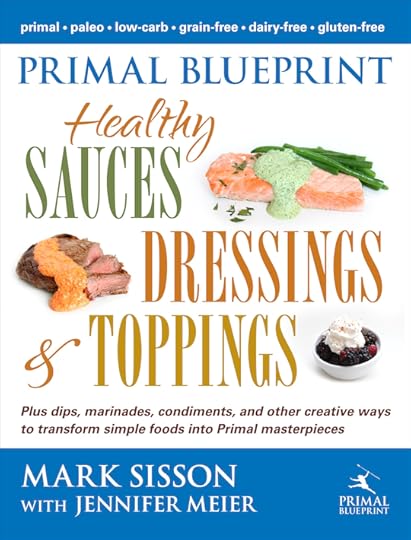
As I noted last week, the book is now at the printers! I’m really happy with how it has turned out, and I’m sure you’ll love it. In case you missed the announcement last month, this new cookbook is all about turning ho-hum meals into Primal masterpieces with delicious and nutritious sauces, dressings, marinades, condiments, and other toppings. It includes over 120 easy-to-prepare recipes inspired by traditional and contemporary cuisine from around the world. From the staples (ketchup, mustard, hot sauce, mayonnaise) to the innovative (Blueberry Chutney, Coconut Cilantro Pesto, Avocado Lime Dressing), every recipe will enhance the nutritional value of your meal, using only Primal-approved ingredients. That means no gluten, grains, legumes, added sugar, or unhealthy oils. The recipes we developed for this cookbook have already changed the way I prepare my Primal meals. I can’t wait for it to do the same for you.
If you’re a long-time Mark’s Daily Apple reader, you know that I always do something special for devoted readers when I release a new book. Primal Blueprint Healthy Sauces, Dressings & Toppings drops on December 10th, and this book release will be no different. In fact, it will be bigger than ever…
At the beginning of December, I’ll be offering a bunch of fantastic free gifts to anyone that orders one or more copies (it will make the perfect holiday gift!) during the week leading up to the release date. So stay tuned and be ready to jump on this special offer while it lasts.
Don’t Miss It! Receive an Email Alert When the Limited-Time Offer is Announced by Subscribing to the Mark’s Daily Apple Newsletter

November 9, 2012
A Way of Life Has No Finish Line
It’s Friday, everyone! And that means another Primal Blueprint Real Life Story from a Mark’s Daily Apple reader. If you have your own success story and would like to share it with me and the Mark’s Daily Apple community please contact me here. I’ll continue to publish these each Friday as long as they keep coming in. Thank you for reading!
 I have wanted to write my own success story of my life on the Primal Blueprint diet ever since I reaped the initial benefits only three days into the commitment, but I was waiting until I had “finished” my goals. It’s now been more than nine months since my adventure into the Primal lifestyle began, and I have begun to realize that there really is no finish line in personal wellness and contentment. This has become a way of life, and one can always improve oneself. Mark said it best about the Primal Blueprint diet: “This is not the most ripped contest.”
I have wanted to write my own success story of my life on the Primal Blueprint diet ever since I reaped the initial benefits only three days into the commitment, but I was waiting until I had “finished” my goals. It’s now been more than nine months since my adventure into the Primal lifestyle began, and I have begun to realize that there really is no finish line in personal wellness and contentment. This has become a way of life, and one can always improve oneself. Mark said it best about the Primal Blueprint diet: “This is not the most ripped contest.”
From the age of 6, I was a very active child and an especially athletic one. I joined my first competitive swim team that year and it became the focus of my life for the next 12 years. Swimming for five to ten times a week in competitive training kept me extremely fit and health never crossed my mind as I had not an ounce of visible fat anywhere on my body. Keep in mind, though, I was never very cut or ripped either.
I grew up in the south, and my diet reflected the region: lots of meat, chicken fried steak, lots of potatoes and corn, etc. I had sit down family meals with freshly cooked dinners most nights, so in my opinion everything at my dinner table could be considered “healthy,” because hey, at least I wasn’t eating fast food, right? I ate a lot at meals, with heaping amounts of white gravy poured over meat and potatoes, to the point that I had to lay down after each meal.
By the time I was in 7th grade, I had picked up long distance running and joined the cross-country team, in addition to being on the swim team. A normal day for me consisted of 1.5 hour swim practice before school, 5-7 mile run after school, then a 2 hour swim practice after that. Like Michael Phelps, I had to consume massive amounts of calories in order to even maintain my small weight of 145 lbs. (I am 5’10”.) My mom was unable to cook enough to meet my caloric needs, so I turned to eating quick frozen foods between meals. I could easily eat four Hot Pockets at a time, more than once a day in addition to my regular meals. Things started to change for me when we moved.
In 9th grade we moved to Michigan, where I continued my athletic and eating frenzy. Now, I don’t want to say that Michiganders are more unhealthy than southerners, as I have no proof of this, but the city suburban life coaxed me into eating more and more fast food and frozen/boxed meals at this age. This is where my problems began. By 16, I started to have excruciating bouts of heartburn after every meal. It was so terrible that I would have to lie on my side for half an hour after each meal with my eyes closed (a nurse told me this helps put the esophagus in a neutral position). This continued untreated for several years, until I was about to graduate high school. By the time I graduated, I had horrible stomach pains, diarrhea and indigestion, in addition to the heartburn after every meal, every day.
After weeks of tests, I found out that I had inexplicably become lactose intolerant, literally overnight; in addition I had two of the three markers for celiac disease. The doctor said it was not enough to be conclusive, and that I likely didn’t have gluten intolerance. So I was sent on my way with a high-powered medicine for my heartburn and a new ban on dairy products. What happens when you tell an 18 year old that they have no problem with gluten and that they can take a pill for the pain instead of changing food choices? They start eating worse!
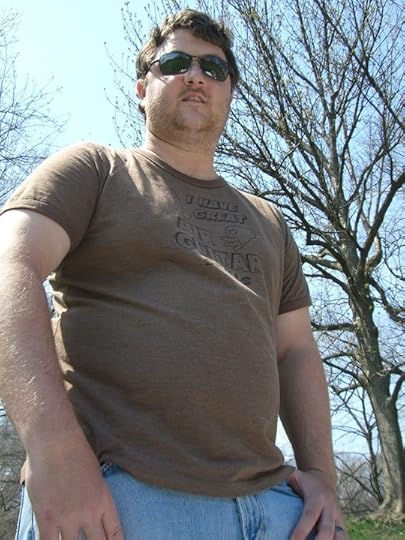
As I graduated high school, I had a few sports injuries and decided to drop out of swimming and running for a while. My metabolism apparently didn’t get the memo, and I desired to eat the way I always did, except that now I was not doing any exercise whatsoever. I gained 15 lbs in the three months between high school graduation and freshman year of college, then another 20 lbs during that year (thanks dorm food!). My eating got worse, in combination with binge drinking, and the pain continued right up to a respectable 220 lbs by the time I was 24. That was the year my final year of graduate school and the year that I got married to a wonderful girl who eventually taught me the importance of my personal health, but not immediately. I gained another 15 lbs my first year of marriage, rounding out at a respectable 235 lbs, standing at 5’10”.
 That was the year I graduated and moved to New York City. Suddenly I had to walk everywhere! I was also an oddity being so fat, rather than closer to the norm as I was in the Midwest. The final straw came when I went to the doctor, and they performed an EKG to make sure the obesity was not damaging my heart (at only 25!). With my wife’s help (she studies nutrition) and a conventional wisdom diet I started shedding the pounds, choking down a tasteless bowl of oatmeal every morning for three years, in addition to exercise and lean meats and veggies. I lost 50 lbs the first year, then 10 the next year and another 5 the next. The problem was that I still had indigestion and diarrhea after many meals, even when they had no dairy or “bad things” in them. I was tired, had no desire to do anything and slept terribly. I also plateaued at this point, no matter how calorie deprived I was or how many hours I spent in the gym. I still had a gut and flab all over at 170 lbs and I knew that it wasn’t loose skin, it was fat.
That was the year I graduated and moved to New York City. Suddenly I had to walk everywhere! I was also an oddity being so fat, rather than closer to the norm as I was in the Midwest. The final straw came when I went to the doctor, and they performed an EKG to make sure the obesity was not damaging my heart (at only 25!). With my wife’s help (she studies nutrition) and a conventional wisdom diet I started shedding the pounds, choking down a tasteless bowl of oatmeal every morning for three years, in addition to exercise and lean meats and veggies. I lost 50 lbs the first year, then 10 the next year and another 5 the next. The problem was that I still had indigestion and diarrhea after many meals, even when they had no dairy or “bad things” in them. I was tired, had no desire to do anything and slept terribly. I also plateaued at this point, no matter how calorie deprived I was or how many hours I spent in the gym. I still had a gut and flab all over at 170 lbs and I knew that it wasn’t loose skin, it was fat.
My brother in law is a trainer who changed his life with the Primal Blueprint diet, but he never once tried to force me into it or be pushy, I had only heard about it in passing. He knew I was unhappy though, and for Christmas he bought me The 21-Day Total Body Transformation (and a bad ass Santoku knife to rip through whole foods!). Starting on January 1, 2012 I made the leap into the Primal life. After three days, poof!, no more indigestion, cramps, diarrhea or discomfort after meals! I was amazed! Within a month I had unlimited energy and I was happier, especially because I replaced that disgusting oatmeal with eggs and bacon and avocado in the morning! The scale didn’t change much, but I noticed my neck, chin and chest leaning out and not becoming as loose. I could go out and run 10 miles after a 10 hour day of work completely fasted. I was no longer a victim of the food I ate. I no longer had to worry about waiting an hour after I ate to make sure I had a bathroom nearby. I was free!

Eventually I replaced my running with sprinting, and added heavy lifting and Primal movements (pushups, pullups, etc.). These in combinations with a two month period of super strict paleo took me down another 10 lbs of fat this summer and added muscle to my core and my arms. People were amazed that in two months I was able to make an obvious difference so quickly.

So here I am nine months in to my journey. Do I still have unwanted fat? Yes. Do I still have a ways to go? Yes. But I am happier than I have ever been, healthier than I have ever been and feel like a member of the human race again. The Primal life is not a diet to me and has no ultimate “finish line” or “goal” to reach, but is rather a way of life that can be easily sustained for the rest of my days.

Sean
Grab The Primal Blueprint Cookbook Today and Receive Free S&H and a Free Primal Blueprint Poster

November 8, 2012
Hormesis: How Certain Kinds of Stress Can Actually Be Good for You
 Why are certain things “good for us”? Why does lifting weights make us stronger? Why does running a mile on a regular basis improve our aerobic conditioning and allow us to improve our times? Why does skipping a meal every now and then increase insulin sensitivity, lower body fat, improve lipid numbers, and generally make us healthier? Why are plant polyphenols so consistently associated with health benefits?
Why are certain things “good for us”? Why does lifting weights make us stronger? Why does running a mile on a regular basis improve our aerobic conditioning and allow us to improve our times? Why does skipping a meal every now and then increase insulin sensitivity, lower body fat, improve lipid numbers, and generally make us healthier? Why are plant polyphenols so consistently associated with health benefits?
The answer is hormesis. You see, back when Nietzsche said, “That which does not kill us makes us stronger,” he may not have been talking about the positive and beneficial physiological effects of exposing yourself to various stressors and toxins, but he could have been. All those things – the exercise, the fasting, the plant phytochemicals, plus more – stress our systems and force us to adapt to the imposed stress. Organisms, after all, like to maintain homeostasis, stability, and balance, and hormesis is ultimately about the push to maintain homeostasis in a changing environment. If the environment changes – say, because of a weight lifting session – the body must become stronger, healthier, better in order to maintain homeostasis and handle the situation next time it occurs. Best of all, you don’t just compensate for the stressor. You supercompensate. You get stronger/faster/healthier/more resistant to disease than you were before. Think of hormesis as your body “hedging its bet” and going a little above and beyond just to be safe.
Beginning with the discovery that administering small doses of poison stimulated the growth of yeast, researchers have found the hormetic response to be remarkably preserved across species lines. Fungi (PDF), bacteria, insects, plants and algae, and animals all show adaptive responses to stressors. To date, around 5600 ”dose-response relationships satisfying evaluative criteria for hormesis” have been identified. Hormesis, it seems, is a fundamental part of being alive. What this means, of course, is that many things that we assume are good for us are actually “bad.” They are stressors that initially do “bad” things to our health in the short term but induce an adaptive response that improves our health in the long term. Here are some examples:
Exercise - If you were to run labs on a guy who had just lifted heavy things for an hour, doing full body compound movements with excellent form and intensity, and was dripping sweat, the numbers would look awful. Inflammatory markers would be elevated. Oxidative stress would be evident. Cortisol will likely be high. The muscles would be suffering from extensive microtrauma – tiny little tears amounting to physical damage. Subjectively, he’d be in pain, exhausted, sore, and generally unable to do much of anything except rest, sleep, eat, and drink. Provided he rests and eats and sleeps, however, the guy will get stronger and faster and fitter as a buffer against future stressors over the next few days. Those inflammatory markers? They’re ultimately a signal for his muscles to repair themselves and come back stronger than before. A single bout of exercise, then, is oxidatively stressful to the body, while regular exercise lowers the oxidative challenge. In other words, the stressor remains, but our ability to respond to it improves (PDF).
Calorie restriction/IF – Skipping meals, limiting calorie intake, and simply having less food than your body expects is a major stressor, but it’s a stressor that offers many health benefits. The lack of food doesn’t just promote leanness (and in the case of IF, lean mass retention), it also triggers autophagy (both neuronal and systemic) – the process by which cells clean themselves up and recycle all the unnecessary and dysfunctional junk that’s been accumulating within.
Plant phytochemicals – You know all those colorful plant pigments with an impressive track record on promoting good health? Evidence is accumulating that many of the polyphenols, phenolic acids, and other bioactive phytochemicals exert some of their health effects via hormesis. Instead of evolving expressly for the benefit of Whole Foods shoppers, phytochemicals exist to protect plants from oxidative stress and to ward off pests. That’s right: they are natural pesticides, plant toxins meant to keep bugs and other pests away. They won’t kill us, of course, but they will irritate us enough to induce a compensatory adaptive response at the cellular level that results in many of the benefits attributed to fruits and vegetables. If we were eating blueberries the size of Volkswagens we might not survive the anthocyanin overdose, but a handful or two appears to be perfectly safe and even healthful.
Cold water plunges – As I’ve mentioned before (though not using the “hormetic” word), cold water exposure can elicit an adaptive response. For example, although ice bathing was shown to increase oxidative stress markers in swimmers, the markers for endogenous antioxidant production also increased. Anti-tumor immunity also gets a hormetic boost from cold exposure.
Sunlight – Our tendency to tan in response to sunlight is a classic example of a hormetic response. The tan protects our skin from sun damage, reduces skin cancer, looks good, and indicates that we’ve generated vitamin D.
Radiation – Although most scientists assumed that ionizing radiation would adhere to the linear no threshold model (where even the smallest exposures to a toxin result in elevated risk of harm), there is growing evidence that low doses of radiation actually protect against cancer via hormesis.
We don’t know all of the mechanisms behind hormesis, but there is one likely candidate: NRF2. NRF2 is a transcription factor that, once triggered, expresses a number of genes involved in antioxidant defense, detoxification, and cellular protection. Many of the stressors we’ve just discussed trigger NRF2, including exercise, calorie restriction, polyphenol consumption, radiation, and sunlight.
It should be emphasized that while a low or moderate dose often elicits a favorable response, the opposite is likely true of a high or protracted dose. Intermittent fasting can elicit major health benefits, improve lean mass retention, and boost fat burning; starvation will also cause major weight loss, but not in a good way. Twenty minutes of moderately strong sun gets you a mild tan and plenty of vitamin D; five hours of strong sun gets you a sunburn. During a single stressful life event, adrenaline and cortisol will increase and make you alert and hyperware of your surroundings; a year of chronic stress will wear you down and lead to adrenal fatigue. This is also why I talk about chronic cardio. The occasional acute bout of really tough endurance work is probably helpful to your fitness; it’s the chronic, constant, day-in, day-out endurance training that is not, that will break you down. Even NRF2 has a “dark side”; its over expression will increase the resistance of cancer cells to chemotherapy.
Well, what do you think, folks? Personally, I’ve always found the hormetic response a valuable tool for viewing and assessing the world and all its myriad stressors. We’re bound to run into some of them – maybe all of them, at some point – and it’s nice knowing that there’s a real, quantifiable physiological phenomenon that explains how the hard times we all endure may not be in vain and may in fact actually make us stronger, healthier, faster, fitter, and better. You can’t help but be a glass half-full type of person when you filter many of life’s crazy headaches through the concept of hormesis.
Get the Primal Blueprint Fitness eBook, Free Health Tips and Primal Recipes Delivered to Your Inbox

November 7, 2012
8 Ways You Might Be Inadvertently Sabotaging Your Fitness Routine
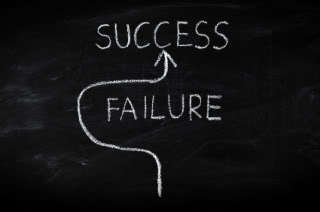 Last week, I went over a few ways Primal Blueprinters experiencing a weight loss plateau (or fast approaching one) might be inadvertently sabotaging their own weight loss efforts. This week, I thought I’d do a similar post on how we tend to sabotage our pursuit of fitness. What do I mean by inadvertently sabotaging your fitness routine? For a PBer, they do this a little different than the average person. You’re probably not wasting your time with endless amounts of bicep curls. You’ve probably seen the light and avoid excessive amounts of Chronic Cardio. You’ve got the basics down pat, you’ve got calluses from holding barbells, and you know the difference between Olympic lifting and powerlifting. All that said, you’re not perfect. Mistakes can be – and almost certainly are being – made. By identifying some of these common, sneaky mistakes, and hopefully identifying with a few of them, you’ll be able to make real strides toward improving your fitness.
Last week, I went over a few ways Primal Blueprinters experiencing a weight loss plateau (or fast approaching one) might be inadvertently sabotaging their own weight loss efforts. This week, I thought I’d do a similar post on how we tend to sabotage our pursuit of fitness. What do I mean by inadvertently sabotaging your fitness routine? For a PBer, they do this a little different than the average person. You’re probably not wasting your time with endless amounts of bicep curls. You’ve probably seen the light and avoid excessive amounts of Chronic Cardio. You’ve got the basics down pat, you’ve got calluses from holding barbells, and you know the difference between Olympic lifting and powerlifting. All that said, you’re not perfect. Mistakes can be – and almost certainly are being – made. By identifying some of these common, sneaky mistakes, and hopefully identifying with a few of them, you’ll be able to make real strides toward improving your fitness.
Let’s take a look at what I’m talking about, shall we?
You’ve taken “less is more” a little too literally.
Simplicity is great, and less often is more. Sticking with the Primal essential movements – squats, pushups, pullups, planks – will get you strong and fit. No question about that. And I’ve always said that making your short workouts shorter and more intense is the key to an effective training program. However, if you end up taking that “less is more” too literally and reducing the load, the variety, the volume, the duration, and the intensity, you’re making a mistake. As Clifton Harski explains in a recent blog post, zeroing in on the basic movements can get you strong and give you good body comp, but many trainees interested in overall fitness would be well served trying out new things, new movements, new lifts, new activities. In other words, “less is more” should be applied to certain aspects of fitness, but not to all of them. Otherwise, you’ll end up doing almost nothing at all (and “something is better than nothing”).
You’re overly wedded to one school of thought.
Reading “Starting Strength,” discovering Leangains, or joining CrossFit can be a revelation. In the case of SS, it offers the sort of no-nonsense, extremely detailed form instruction for the major lifts that you’d usually have to get from a highly skilled coach in person. With Leangains, you get a way to gain strength and lose fat that seems effortless. And the camaraderie, variety, and intensity of CrossFit becomes addictive and truly effective, especially at first. But I’ve heard from people who read the book, followed the program, and now feel like anything less than low bar squats three times a week for perpetuity is a waste of a workout routine – even if it’s no longer the most effective way for them to train. I’ve heard from people (like a Worker Bee who did Leangains a couple years back) who felt like having a bite to eat before a workout was sacrilege and whose fitness suffered as a result of paralysis by overanalysis. Then you’ve got CrossFit, which can be a dangerous tool when wielded by an inexperienced coach. These are just examples of popular and effective fitness schools of thought that, if hewed to without question, might limit your options and overall development. It’s not an indictment of the programs themselves; it’s a warning against inadvertent, self-imposed limitations. So, if you’re a low-rep, high-weight guy or gal, try adding a bit more volume. Try 20-rep breathing squats. Do some easy “cardio”; haul out the old bicycle for a day or hit the trails for a hike/jog/fractal persistence hunt. Try MovNat.
You’re on the wrong program.
Maybe it’s been three years and you’re still trying to maintain linear progression. Maybe you’re on an advanced program when you’re actually a beginner. Whatever the case, you need to be on the right program if you want to get the results you should be getting. Obviously, I can’t tell you what program you need, because there are thousands of “yous” reading this. What I can say is that you should make an honest appraisal of your progress. If you’ve been keeping a training log, review it. Have you been getting stronger, or have you been stalled out for a few weeks or months? Are you getting faster, or are you running in place? See where you fall on the scale of strength standards to determine if you’re a novice, an intermediate, or an advanced lifter, then pick your program accordingly.
You’re not incorporating nature into your workouts.
You don’t need to work out in nature to get good results, but it definitely helps. Research shows that exercising outdoors is superior for improvements in mood, self-esteem, stress reduction, and mental health. Though the research doesn’t show any difference between strength gained or stamina accumulated – the most common barometers for fitness progression – we do know that reducing our stress load will improve our response to training and improving our mood will help us be more consistent with our workouts. Try taking your workouts outdoors. Ditch the treadmill for the forest path, the trail by the creek, the beach, or even the suburban street. Lug the kettlebells (or even the barbell) out to a park. After all, nature is our baseline. It’s not just extracurricular; it’s home.
You focus on one aspect of fitness to the detriment of others.
You don’t have to be a jack of all trades, but you should be able to ride a bike, swim a lap, hike for an hour, run a mile, and lift some heavy things if you want. I find extreme feats of athleticism impressive, of course, which is why I was drawn to marathons and triathlons for so long: there’s something, well, awesome about being a top performer in an elite sport. But you definitely have to sacrifice your overall athleticism to make it. You have to give something up to make it. Back when I was one of the top runners in the country, I was far, far weaker in the weight room than I am now. I was stiffer, less mobile. I couldn’t do anything but train for my specific sport. Today, I’m probably an overall better athlete (accounting for age, of course) than I was then, and I’m doing just a fraction of the work I did back then. I’m not going to win any marathons, of course, but I’m far more able in just about every other physical arena.
You’ve forgotten about mobility.
As PrimalCon presenter, CrossFit coach, doctor of Physical Therapy, and supple leopard Kelly Starrett would say, “position is power.” If you are unable to get your limbs and your joints into advantageous positions, you will be unable to generate as much power as you otherwise would, you’ll be forced to rely on inefficient movement patterns, and you will open yourself up to injury. By definition, selling your power production potential short is limiting your fitness. Being inefficient with your movements is limiting your fitness. Being injured prevents you from training and moving effectively (or at all), which absolutely limits your fitness. Get yourself some lacrosse balls, a foam roller, and maybe some bands, and get to work on your joint mobility. Sit in a Grok squat whenever you can – when you brush your teeth, wait for the bus, or even when you use the toilet. Incorporate mobility into your everyday life and your mobility under load will become that much better.
You’re not having fun.
Workouts should be hard, they should be challenging, but they should not make you dread their arrival (except maybe heavy squats), nor should they make you hate your life. Taking on a workout routine needn’t require Norwegian death metal, head butting the power rack until a mild concussion sets in, and the reception of three to five hard slaps to the face to get you psyched up. Any one of those is perfectly acceptable, but if you require all three, you’re likely not having any fun. If not having fun is your thing, cool. What I’ve found, though, is that the perpetually hard and miserable and balls-to-the-wall workout routine is a recipe for disaster and ruin. Remember what I always say: I train so I can play. If you can make your workouts look and feel like playing, even better. Play some sports, get a workout buddy, get a dog.
You’re still not sprinting!
Now, I don’t want people rushing into full-on all-out sprints if they’re not prepared. That’s a sure fire way to blow a hamstring. And if you’ve got bad knees/ankles/hips/feet, I don’t expect you to leap out of your chair and head down to the track right this instant. But if you’re able-bodied? If you regularly sprint to catch a runaway child, pet, or train without hurting yourself? If you’re lifting religiously? You need to be sprinting, too. Pound for pound and minute for minute, sprinting is the best exercise for transforming body composition, improving strength and power, and bestowing stamina and speed. It’s over quickly, it doesn’t take an hour, and it requires no equipment. If you aren’t quite so able-bodied but still want to get the benefits of sprinting, you might try cycling, swimming, stair-stepping, elliptical riding, pushing a car or weight sled, or even uphill sprinting (reduces the impact on your joints and the distance your leg travels, thus reducing knee pain and the threat of hamstring pulls; plus, it’s more intense than running on a flat surface).
These aren’t necessarily huge deal breakers, obviously. You can probably be fairly happy with your progress even if you have some deficits in the areas outlined above (plenty of people do; I see it everyday). But you can do better. I can. We all can. And by taking an honest look at your own fitness routine with these issues in mind, I think you’ll find that addressing the deficits will be in your ultimate best interest. Fitness will become more enjoyable, more effective, more sustainable, and safer.
Thanks for reading, folks! Be sure to let me know what other common mistakes people make when putting together a workout routine!
Grab a Copy of The Primal Blueprint 21-Day Total Body Transformation and Start Getting Primal Today!

November 6, 2012
Boxers or Briefs?
 Believe it or not, it’s a question I get fairly often: “Grok didn’t wear tighty-whities. Should I?”
Believe it or not, it’s a question I get fairly often: “Grok didn’t wear tighty-whities. Should I?”
From time to time, I like to have some fun and expand the scope of this blog beyond the regular topics. Health and wellness, after all, come down to far more than just diet and exercise (and sleep and sun and stress, for that matter). So I’ve written about everything from the benefits of squat toilets, going poo-less, and stand-up workstations to the dangers of excessive sitting, nighttime light exposure, and passive living. Today, I’m going to branch out again. Today, I’ll attempt to answer what sages, wise men, gurus, and guys sitting around in gym locker rooms could not: boxers or briefs (or nothing at all)? So fill your cup and let’s dig in.
This topic was prompted by a reader’s email:
I thought this could be an entertaining topic.
We’ve all seen the Seinfeld episode where Kramer starts wearing boxers when Elaine tells him boxers are better for his sperm count.
Is there any hormonal drawbacks associated with briefs that could be caused by the low sperm count or vice versa?
Our ancestors were certainly “out there, and loving every minute of it.”
Sean
Here’s the Seinfeld clip in question:
Having watched that, I’m not even sure a post is necessary. Kramer pretty much covers it. Still, not everyone has access to YouTube at work, so I’ll continue.
I’m not going to discuss the subjective effects of wearing boxers, briefs, or nothing at all. People have their preferences. Some people like providing a safe, secure, snug house for their boys, while others take a more free-range approach. No value judgements cast here.
But what’s our natural state?
While it could be argued that going commando is “most natural,” seeing as how we’re all born in the Hanes-less state, I’d say that loose-fitting boxers are pretty close to natural, too. Loincloths were the earliest undergarments, and those were essentially just a piece of fabric loosely looped between the legs. Plenty of air flow and very little confinement. Grok’s private bits definitely breathed, whether he wore a loincloth or nothing. Okay, so one is more natural than the other(s), but does that make a difference for our health? Natural doesn’t always mean better, you know.
“Everyone knows” that wearing tight briefs reduces sperm count, and I briefly discussed this in a Dear Mark that asked about laptops and infertility. It’s true that scrotal heat stress does have the potential to affect sperm quality, count, and motility, as in men with varioceles – enlarged testicular veins that lead to excessive blood flow, elevated scrotal temperatures, and sometimes infertility – but it’s unclear whether choice of underwear represents a significant-enough thermal stress to the scrotum to induce negative changes. The questions we must ask are: does the choice of underwear truly affect scrotal temperatures? And if it does, is it sufficient to negatively affect male fertility? Let’s look at the evidence:
In one study, healthy young men wearing tight-fitting polyester-lined athletic support garments consistently displayed elevated scrotal temperatures between 0.8 and 1 degree C. This increase, however, did not affect any fertility parameters, including sperm concentration, sperm motility, sperm morphology, sperm viability, sperm hyperactivation, and the ability of sperm to penetrate hamster oocytes (sadly, no hamster-human hybrids were created throughout the course of this study).
Another study found no difference in scrotal temperatures between wearers of boxers and wears of briefs. In fact, the average temperature was actually a hair lower in the brief group, though it wasn’t significant. Fertility parameters all checked out, as well.
In another study, the author measured how various garments and positions affected his own scrotal temperature. Boxers were 0.5 degrees C cooler than briefs. Scrotal slit underpants were 1.2 degrees cooler than boxers. Sitting with thighs apart was 1.6 degrees cooler than sitting with thighs together. He didn’t measure his fertility parameters, however, so we don’t know whether or not those were affected.
And finally, a team of researchers studied the effects of boxers, briefs, and going commando on the scrotal temperatures of 50 healthy men without a history of infertility. They found conclusive evidence that wearing tight-fitting underwear such as briefs resulted in elevated scrotal temperatures, though it “remains to be elucidated whether these differences are linked to semen quality and consequently male fertility.”
Choice of fabric might make a difference, too. In an Egyptian study, one researcher used polyester slings (that allowed penis exposure but kept the scrotum confined) to induce azoospermia – the state of having no measurable sperm in semen – in previously fertile men. These were like briefs on steroids, fully preventing the tendency of the scrotum to “hang low” (which it does for thermoregulatory purposes). They caused the testicular temperatures to approach the rectal temperatures, which is way hotter than testicles are built to withstand and which apparently contributed to the infertility. But the author also thought that scrotal-polyester friction-induced electrostatic charges might have played a role as well. To figure out which was responsible, that same researcher did a followup study, this time using dogs in specially-fitted underwear. To eliminate the confounder of scrotal temperature, he made the underwear loose fitting. And sure enough, testicular temperature didn’t change much. Not even in the polyester group. The dogs wore the underwear for 12 months straight. Once again, the polyester underpants killed fertility (without affecting temperature), while cotton underwear dogs and control dogs (commando) experienced no change. I was alive during the seventies, and I can certainly vouch for the friction that occurs between bare skin and polyester.
As for the hormonal stuff? While scrotal temperature changes do affect follicle stimulating hormone, which controls sperm quality and count, they do not seem to affect testosterone levels. Fertility can be affected, but not via testosterone.
I wish I could give you an absolute proclamation, here, but I can’t. How about some general guidance?
If you’re having trouble conceiving, or your sperm count comes back low, and you wear briefs or some other tight-fitting underwear, switching to boxers, or cotton, or nothing at all might help. Either way, it’s not going to hurt.
Normal scrotal temperature – the kind that promotes fertility – is one or two degrees C below body temperature. As seen in the Egyptian study, once the scrotal temperature approached the rectal (body) temperature, fertility was impaired. The best way to measure your scrotal temperature is with an infrared thermometer, which can be a bit pricey.
Don’t wear tight fitting underwear – polyester or not – for 12 months straight. Give your boys some time off, whether that comes through targeted ice baths, walking around (walking and standing and even running lead to cooler scrotums than sitting) more, or switching to more forgiving undergarments.
Switch to a natural fabric, whether it’s cotton, animal skin, or nothing.
Don’t be in such a rush to always replace your underwear with a gaping hole in the crotch. It might actually be helping, especially if it facilitates scrotal drooping.
Thus, as is usually the case, there’s no right or wrong answer here. While wearing tight-fitting briefs can increase scrotal temperature, which can affect fertility, it’s not a sure thing. The research is unclear, and the ultimate choice rests in your hands. Go ahead and mess around with infrared thermometers if you’re really concerned, and get your sperm count tested, but you probably don’t have much to worry about as long as you’re adhering to the general guidelines listed above.
So, dear readers, what say you – boxers or briefs?
Grab The Primal Blueprint Cookbook Today and Receive Free S&H and a Free Primal Blueprint Poster

November 5, 2012
Dear Mark: Bacon Fat Stability, Noise Machines, and Pig Feed
 Is there any food more lauded and feared, beloved and bewitching, hated and praised – all at the same time – than bacon? Have full-fledged Internet subcultures sprung up around any other animal product? Does any food but bacon inspire obvious longing masquerading as righteous rancor and vitriol? And yet no matter how much has been written about bacon, questions inevitably and indefinitely remain. Case in point: today’s round of questions. That’s right, we have two bacon-related questions and one unrelated question about noise therapy and sleep. I’ve got to say – this really warms my heart. Not only are you trying to find pastured bacon and wondering about what the pork you eat is being fed, you’re also trying to figure out how to sleep better. How much more Primal can you get?
Is there any food more lauded and feared, beloved and bewitching, hated and praised – all at the same time – than bacon? Have full-fledged Internet subcultures sprung up around any other animal product? Does any food but bacon inspire obvious longing masquerading as righteous rancor and vitriol? And yet no matter how much has been written about bacon, questions inevitably and indefinitely remain. Case in point: today’s round of questions. That’s right, we have two bacon-related questions and one unrelated question about noise therapy and sleep. I’ve got to say – this really warms my heart. Not only are you trying to find pastured bacon and wondering about what the pork you eat is being fed, you’re also trying to figure out how to sleep better. How much more Primal can you get?
Hello Mark,
My wife and I have been keeping our bacon grease to cook eggs and other things for a couple days. How long can we keep the grease in the fridge before it’s too oxidized or rancid for safe use?
For now we’re using uncured bacon from Trader Joe’s. Any suggestions for finding some pastured bacon sources? We live in Phoenix and have been unable to find it as easily as grass fed beef.
Thanks!
Mark
To my knowledge, there aren’t any studies looking at the issue of the oxidative stability of bacon grease, but one study (PDF) looked at the oxidative stability of purified olive oil (antioxidants and other polyphenols removed, just like bacon fat which has zero endogenous antioxidants), which is high in monounsaturated fat (like bacon fat) and low in polyunsaturated fat (like bacon fat, depending on the amount of PUFA in the pig’s diet), when exposed to moderately warm conditions and allowed to sit out in the open. At 40 degrees ºC or 104 degrees ºF – a toasty number, but a believable one if the bacon grease is kept on or around a stove that sees a lot of use – the olive oil was pretty stable for about five days, after which the oxidation products began to slowly rise. At ten days, the rise in oxidation products took off and sharply increased. At 50 (122 ºF) and 60 (140 ºF) degrees ºC, the oxidative products rose sharply almost immediately and maintained their upward trajectory. I think this gives us a decent idea as to the stability of bacon fat, although you should keep a couple things in mind:
If the bacon comes from a pig who ate lots of corn, soy, and corn/soybean oil, it will be higher in PUFAs than the olive oil tested in the study. This will make it go rancid faster.
The bacon grease already got exposed to heat when you cooked the bacon. The degree of oxidation depends on how long and at what temperature you cooked it. Best to go low temperature to keep the oxidation down.
Lesson? When in Death Valley, the Sahara, or camping on the outskirts of Las Vegas in summer, you probably want to toss your bacon grease.
Keeping it in the fridge, where it’s away from heat and light and far cooler than 40 degrees ºC (let alone 50 or 60), however, eliminates two major oxidative stressors. Put it in a sealed jar and you’ve minimized another major oxidative stressor: air (PDF). And you’re only keeping it for “a couple days”? You’re probably safe.
As for pastured bacon in Phoenix, I found a couple promising leads.
Hopkins Hog Farm, located near Aguila, raises their heritage pigs outside in large paddocks and finishes them on pasture. The bulk of their diet comes from freshly-ground grains. No mention as to the types of grains used, but I’d imagine it involves corn and soy. They sell at the Mesa Community, Ahwatukee, and Old Town Scottsdale farmers markets, although I’m not sure if they actually make bacon. Their web page lists a variety of different cuts and sausages, but no mention of bacon. Of course, I’ve never heard of a pork farmer that didn’t do bacon.
M Triangle Ranch is a bit farther out, but this Arizonan who was desperate for pastured pork had great things to say about their truly pastured bacon. She was able to email the owner and arrange for a meet-up point where a clandestine bacon exchange occurred. If you’re ever in Tucson, you might think about looking them up or visiting a farmers market that sells their products.
Date Creek Ranch also has pastured pork. They do receive grains (no mention of which; probably corn), but once weaned, the pigs are turned out and allowed to “root and behave like pigs!”
There’s also The Meat Shop, which has great prices and selection but doesn’t appear to feature pastured pork.
For everyone else, to find quality meat suppliers in your area take a look at Eat Wild and Local Harvest,
Good morning, Mark. I am following a beta test exercise program that also provides weekly challenges. This week’s challenge is to buy a sound therapy machine and use it while sleeping, but with no explanation why/how it is beneficial. I already black out my room, have no ambient light such as an alarm clock, get as many hours before midnight as possible – what is your take on the sound machine?
Thanks!
Linnea
Ottawa, Ontario
Morning, Linnea.
White noise, which most sound machines tend to focus on, does seem to help people sleep. I started using white noise in college as a means of partially drowning out the all-night-every-night disruptive sounds in the dorm. As an overtrained endurance athlete/scholar, I found I slept much better with the sound of a window fan kept on a low setting. I use that same technique today to actually introduce ambient sound over an otherwise completely quiet (and blacked-out) bedroom. It’s as if too much noise is bad, but not enough is also disruptive. In fact, the first thing I check in a hotel room when I’m on the road is the quality of sound coming from the AC or the fan!
There aren’t many studies, but there are a couple.
In a group of newborns, researchers exposed them to either white noise or no noise. 80% of the white noise babies fell asleep within five minutes of exposure, while just 25% of the control babies managed to fall asleep in five minutes without any noise at all. “White noise may help mothers settle difficult babies.” Of course, they probably have to be out of the womb if white noise is to have any beneficial effect on their ability to sleep. Sorry, fetuses.
To study how the frequently disruptive soundscape in an intensive care unit could be mollified, researchers exposed subjects to several different environments – baseline (no sound), recorded ICU sounds, and recorded ICU sounds accompanied by white noise – through the night and recorded the number of “arousals.” The baseline group had the fewest number of arousals, at 13.7 per subject. The ICU sound group had the most, at 48.4 arousals. The ICU sound/white noise group had just 15.7 arousals, very similar to the baseline group. Since the change in sound from baseline to peak seemed to determine whether or not a subject would be aroused, researchers determined that the white noise “filled in the gaps” of silence with noise, thereby creating a higher “baseline.”
It makes sense, doesn’t it? We know intuitively that sound certainly affects sleep, both positively and negatively. An alarm blaring in the night, the steady drip drop drip of a leaky faucet, and a baby’s wailing seem evolutionarily designed to keep or make us awake, don’t they? Sharp noises in the dead of night can mean scary things, things that threaten a hominid’s immediate survival. Think snapping twigs, the snarl of a tiger, the whoop of a war cry. Our problem nowadays is that aural disturbances are the norm. Cars honk, motorcycles rev, radios blare. White noise appears to be a neutral sound akin to the soothing hum of the wilderness that smoothes out the night.
And of course, any sound that you personally find relaxing/soothing/etc. is probably going to also help you sleep.
Dear Mark,
In an effort to make Primal living more cost effective, we are in the process of purchasing some beef in bulk through a local farm found through Eat Wild. We also eat a fair amount of pork, and I looked at the couple of local farms that produce pork, and they both mention supplementing the pigs’ feed with corn and soy. I don’t know enough about modern pig farming to know whether this is standard practice even within the non-commercial farming arena, or if I just need to keep looking for another source. Is the organic, no hormone, no antibiotic pork I buy now supplemented with corn and soy?
Does it really matter?
Thanks.
Cathy
I’d say it does matter, especially if you’re going to be forking over a large amount of money for a large amount of pork. The fatty acid distribution of pig meat is extremely sensitive to the fatty acid content of the pig’s diet. If the feed is high in polyunsaturated fat, particularly the linoleic acid predominant in corn and soy, the pork fat will reflect that. And there’s clear evidence that due to the proliferation of cheap corn and soy products (including meal and oils) in pig feed, the typical PUFA content of pork fat has been grossly underreported. As Chris Masterjohn reports, the “new” pork fat has less saturated fat, less monounsaturated fat, and nearly twice the amount of linoleic acid as before, while Tokelauan pigs – given tons of coconut – end up with just 3% of fat as PUFA.
Although you probably won’t be able to get coconut-fed pork, you can do better by looking for pigs given other types of grains, like barley, oats, or even wheat. Pigs fed on these “small grains” tend to have higher quality (read: more firm and less polyunsaturated) fat than corn or soy-fed pigs (PDF). And you probably won’t be able to totally avoid soy and corn; that’s okay as long as the pigs get other types of feed, too. “Supplemented with” is probably okay (but try to find out what else the pigs eat and just how much the “supplement” really is). What you don’t want is a factory-farmed or “pastured” pig that gets the bulk of its nutrition from corn, soy, and vegetable oil.
If you absolutely can’t get a full breakdown of the pig’s feed, before you commit to a bulk order, try to get your hands on some bacon. If the bacon is stiff, firm, and tries to maintain its shape and solidity when held at one end (it doesn’t droop down like a limp noodle), the pig’s diet was likely fairly low in corn and soy and the fatty acids in the bacon are mostly monounsaturated and saturated - as they should be. I’ll sometimes get pastured pork that’s fed on produce trimmings and leftovers plus forage, barley, and oats, and the bacon is pretty darn firm and stiff, even at room temperature. I’ve never run a fatty acid analysis on it, but it certainly passes my subjective taste analysis with flying colors.
That’s all I’ve got for today, folks. Since I’ve mentioned bacon (twice!), I imagine today’s comment section will provide a rollicking good time, so go ahead and have at it. Thanks for reading!
Grab The Primal Blueprint Cookbook Today and Receive Free S&H and a Free Primal Blueprint Poster

November 4, 2012
Weekend Link Love
 Research of the Week
Research of the WeekThe best playground is the one nature provided, new research is suggesting. Amen.
Rats whose grandmothers smoked (er, received a nicotine dose) during their pregnancy were at a higher risk of having asthma, even though their parents did not receive any nicotine. Epigenetics – powerful stuff, eh?
Interesting Blog Posts
Frank Forencich makes the case for “wicked smarts” in a complex world fraught with wicked problems.
The Whole 9 crew talks about a largely unknown, if not uncommon, disorder: stress addiction.
Media, Schmedia
The videos from Ancestral Health Symposium 2012 are beginning to roll out. Be sure to keep checking for new arrivals in the coming weeks.
Gary Taubes recently did an AMA (Ask Me Anything) on Reddit. Though it’s too late to ask questions and receive answers from the man, you can see what others asked and how he answered.
Everything Else
For the past few weeks, Coconut Chocolate Primal Fuel has been out of stock due to high demand. If you were waiting for its return to order, it’s now available. To anyone who ordered in the past few weeks, your shipment is on its way!
Imagine how far along we’d be if we time traveled back to the time of Lucy and dropped off a case of these.
I haven’t read it, but if Stefani Ruper‘s past work on women’s issues is any indication, I’d expect PCOS Unlocked: The Manual to be extremely helpful.
Because regardless of how Primal we may be, we still want to smell nice: Primal Pit Paste.
Recipe Corner
Twice-baked roasted butternut squash purée: because roasting and then baking just once simply isn’t sufficient.
For a nice change of pace from the usual holiday fare, how about trying some paleo pumpkin chili?
Time Capsule
One year ago (November 4 – November 10)
Gateway Foods: The Slippery Slope of “Just a Bite” – “This is your brain on brownies. Any questions?” Or, “I learned it from watching you stuff your face with cookies!”
The Problems with Antibiotics: Antibiotic Resistance – What’s ironic about the push to treat everything with antibiotics right off the bat is that this can eventually lead to making those antibiotics less useful.
Email of the Week
Greetings Mark,
Decided to get into the fall spirit with a pumpkin carving. I look forward to spreading the word to curious trick or treaters this year – here’s to hoping my investment of 85% dark chocolate is worth it!
Andrew

Grab The Primal Blueprint Cookbook Today and Receive Free S&H and a Free Primal Blueprint Poster

November 3, 2012
Raw Butternut Squash Slaw
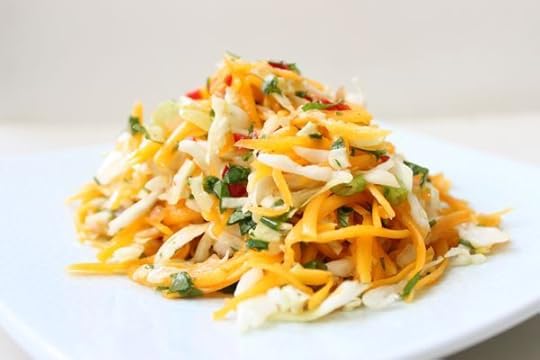 Raw Butternut Squash Slaw is a refreshing and bold slaw with a nod to autumn. Raw squash is mild and slightly sweet with a heavier texture that mixes well with light, crunchy cabbage and a blend of spicy, tangy flavors.
Raw Butternut Squash Slaw is a refreshing and bold slaw with a nod to autumn. Raw squash is mild and slightly sweet with a heavier texture that mixes well with light, crunchy cabbage and a blend of spicy, tangy flavors.
Instead of having to wait for it to slowly roast in an oven, this recipe lets you enjoy butternut squash in no time at all. The texture is different than cooked squash – it’s similar to raw carrots – and the flavor isn’t as sweet. If you don’t typically like squash, you may still love this slaw.
Serve this flavorful slaw for dinner tonight and don’t forget about it when the holidays roll around. The clean, fresh flavor is a nice contrast when served with heavy main dishes like beef and pork roasts or turkey.
Serves: 6
Time in the Kitchen: 20 minutes
Ingredients:
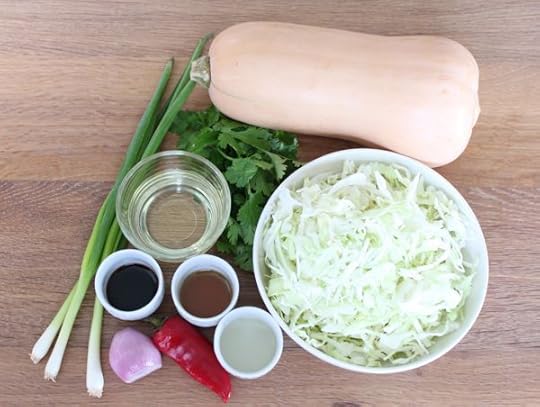
3 cups grated butternut squash (about 1/2 of a peeled and seeded butternut squash) (350 to 400 g)
3 cups shredded cabbage (200 to 250 g)
3 green onions, chopped
1/4 cup finely chopped cilantro or parsley (60 ml)
1 to 2 jalapenos (or other hot pepper) seeded & finely chopped
2 tablespoons unseasoned rice vinegar (30 ml)
1 shallot, finely chopped
1/4 teaspoon salt (1 ml)
1 teaspoon tamari (5 ml)
1 teaspoon toasted sesame oil (5 ml)
1/2 cup neutral flavored oil (such as cold-pressed, high-oleic/high-stearic sunflower oil) (125 ml)
Instructions:
Peel the butternut squash, take out the seeds and cut the squash into chunks. Grate the squash – a food processor is by far the easiest way to accomplish this.
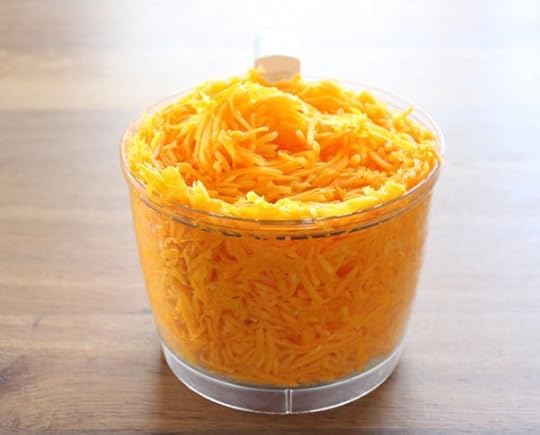
Combine the grated squash, cabbage, green onions, cilantro and hot pepper in a large bowl.

In a small bowl, whisk together vinegar, shallot, salt, tamari, and both of the oils.
Pour the dressing over the slaw. Mix well before serving.

Grab The Primal Blueprint Cookbook Today and Receive Free S&H and a Free Primal Blueprint Poster

November 2, 2012
How the Primal Blueprint Helped Me End My Struggle with Chronic Fatigue Syndrome
It’s Friday, everyone! And that means another Primal Blueprint Real Life Story from a Mark’s Daily Apple reader. If you have your own success story and would like to share it with me and the Mark’s Daily Apple community please contact me here. I’ll continue to publish these each Friday as long as they keep coming in. Thank you for reading!
 In 2000, after an exhaustive round of tests, I was diagnosed with Chronic Fatigue Syndrome. Basically, I had deep and never-ending fatigue with no identifiable cause. Not knowing I had any other choice, I resigned myself to a life limited by my illness. I had to weigh each activity against how long it would take me to recover from it. Something seemingly simple, like taking a hike, could result in days of recovery time. I went from a highly active person who loved hiking and tennis to someone who had to take a nap after weeding for a half hour. In a nutshell, it sucked.
In 2000, after an exhaustive round of tests, I was diagnosed with Chronic Fatigue Syndrome. Basically, I had deep and never-ending fatigue with no identifiable cause. Not knowing I had any other choice, I resigned myself to a life limited by my illness. I had to weigh each activity against how long it would take me to recover from it. Something seemingly simple, like taking a hike, could result in days of recovery time. I went from a highly active person who loved hiking and tennis to someone who had to take a nap after weeding for a half hour. In a nutshell, it sucked.

For nine years I let myself accept that my life would have to suck. Then, in 2009, I came across information from a doctor in the UK who specializes in treating CFS. She had a detailed supplement plan…and she also highly recommended eating Primally to feed our mitochondria. Everything she said made perfect sense to me, so I set about following her plan. I started taking the numerous supplements, and I gave Primal eating a try. Unfortunately, I didn’t educate myself properly about how to eat Primally, so I just gave up the bad stuff and didn’t replace it with the good stuff I was missing. Needless to say, my Primal eating ended quickly. I had crazy cravings for bread, and because I hadn’t paid attention to how my new way of eating was making me feel, I simply gave up the Primal eating. I did keep on the supplements, though, and they helped enormously! I went from not knowing if I could get out of bed in the morning to at least being able to get up without wondering if I was really sick or just having CFS issues.
Jump forward almost three years – this past March. I embarked on a food elimination plan for 28 days, just to see what would happen. After about two and a half weeks, I noticed a HUGE difference in how I felt. I actually had - gasp! – ENERGY. The brain-fog vanished. I could concentrate on tasks for long periods of time. When I got home from work, I didn’t collapse into a puddle of exhaustion on the couch. What could possibly be in my diet to have caused me to suffer from chronic fatigue for so many years?
When I started the food-testing part of the plan, I got my answer: gluten and sugar. My reaction to them was almost instant, with the return of the brain-fog, sore muscles, headaches, and fatigue. There was no way to argue with my experiment: gluten and sugar had to go! So I started researching Primal eating again. Thank goodness, this time I found sites like MDA and Balanced Bites…resources to help me understand where I went wrong the first time and how to do it properly this time.

Since March, I’ve lost about 15 pounds – mostly inflammation weight, according to my doctor – and have gone from wearing size 10/12 to size 4/6…and some of those size 6s are starting to feel big now, too!
But the best part?? ENERGY! I genuinely had forgotten what it felt like to not be in a fog of exhaustion all the time. Pre-Primal, I could manage to work a full day and *maybe* run an errand after work (I generally made excuses for myself about why I could skip the errand, though). Now? Well, here’s an example of what I did one day last week: worked all day, ran two errands, came home and took care of my cats, mowed my lawn, fixed dinner, and put together breakfast and lunch for the next day! That would have been utterly unthinkable for me 6 or so months ago. Now, it’s normal.
Going Primal has absolutely given me my life back! When I was first diagnosed, I never would have thought that my diet was to blame. Such a simple fix to make my life worth living! I do wish I’d been successful going Primal three years ago, but I am so very grateful that I finally discovered my cure. Thank you, Mark, for all you do to help people like me make amazing changes in their lives! Now that I understand what Primal can do for me, I’ll never look back.
Amy
Grab The Primal Blueprint Cookbook Today and Receive Free S&H and a Free Primal Blueprint Poster

Mark Sisson's Blog
- Mark Sisson's profile
- 199 followers



